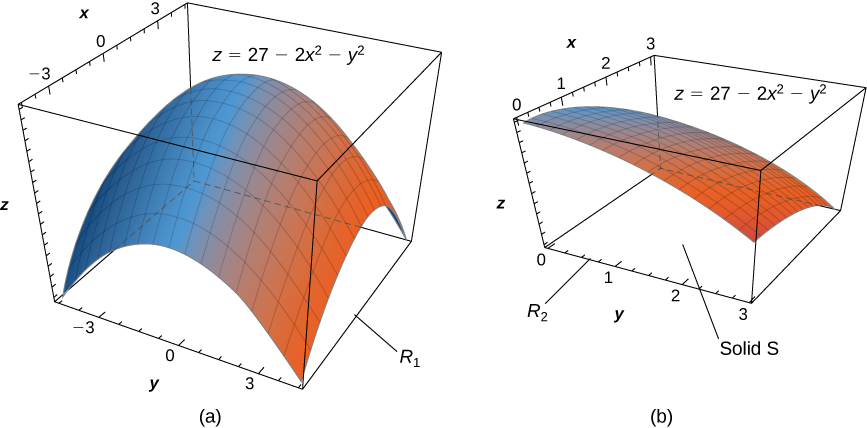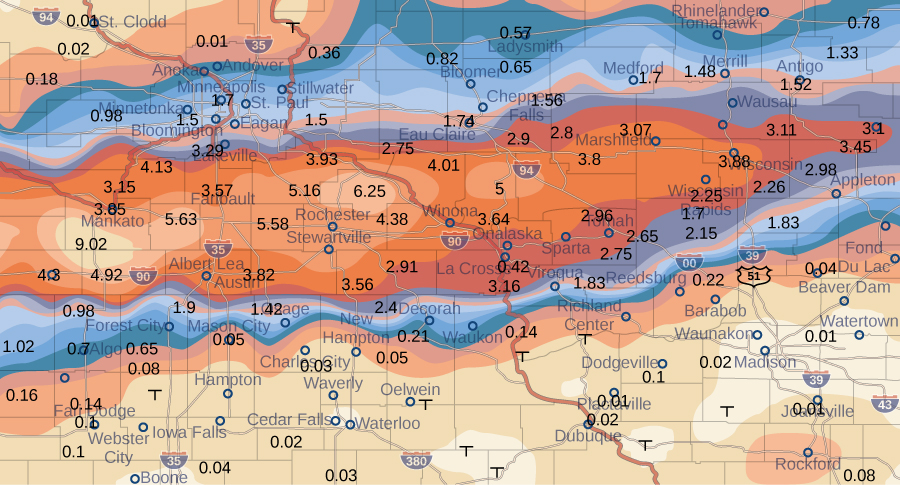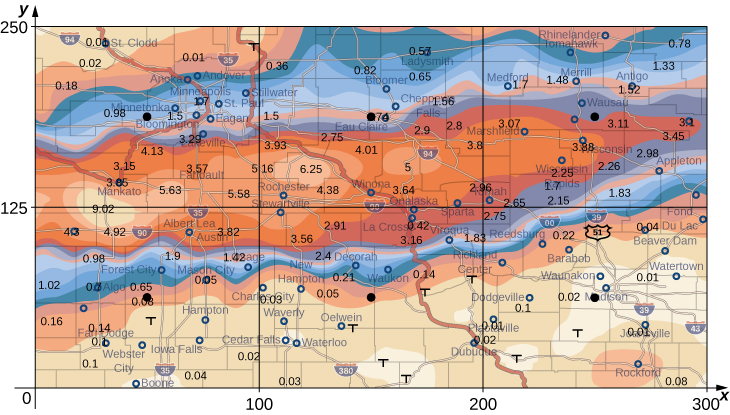| << Chapter < Page | Chapter >> Page > |
Double integrals are very useful for finding the area of a region bounded by curves of functions. We describe this situation in more detail in the next section. However, if the region is a rectangular shape, we can find its area by integrating the constant function over the region
The area of the region is given by
This definition makes sense because using and evaluating the integral make it a product of length and width. Let’s check this formula with an example and see how this works.
Find the area of the region by using a double integral, that is, by integrating 1 over the region
The region is rectangular with length 3 and width 2, so we know that the area is 6. We get the same answer when we use a double integral:
We have already seen how double integrals can be used to find the volume of a solid bounded above by a function over a region provided for all in Here is another example to illustrate this concept.
Find the volume of the solid that is bounded by the elliptic paraboloid the planes and and the three coordinate planes.
First notice the graph of the surface in [link] (a) and above the square region However, we need the volume of the solid bounded by the elliptic paraboloid the planes and and the three coordinate planes.

Now let’s look at the graph of the surface in [link] (b). We determine the volume V by evaluating the double integral over
Find the volume of the solid bounded above by the graph of and below by the -plane on the rectangular region
Recall that we defined the average value of a function of one variable on an interval as
Similarly, we can define the average value of a function of two variables over a region R . The main difference is that we divide by an area instead of the width of an interval.
The average value of a function of two variables over a region is
In the next example we find the average value of a function over a rectangular region. This is a good example of obtaining useful information for an integration by making individual measurements over a grid, instead of trying to find an algebraic expression for a function.
The weather map in [link] shows an unusually moist storm system associated with the remnants of Hurricane Karl, which dumped 4–8 inches (100–200 mm) of rain in some parts of the Midwest on September 22–23, 2010. The area of rainfall measured 300 miles east to west and 250 miles north to south. Estimate the average rainfall over the entire area in those two days.

Place the origin at the southwest corner of the map so that all the values can be considered as being in the first quadrant and hence all are positive. Now divide the entire map into six rectangles as shown in [link] . Assume denotes the storm rainfall in inches at a point approximately miles to the east of the origin and y miles to the north of the origin. Let represent the entire area of square miles. Then the area of each subrectangle is
Assume are approximately the midpoints of each subrectangle Note the color-coded region at each of these points, and estimate the rainfall. The rainfall at each of these points can be estimated as:
At the rainfall is 0.08.
At the rainfall is 0.08.
At the rainfall is 0.01.
At the rainfall is 1.70.
At the rainfall is 1.74.
At the rainfall is 3.00.

According to our definition, the average storm rainfall in the entire area during those two days was
During September 22–23, 2010 this area had an average storm rainfall of approximately 1.10 inches.

Notification Switch
Would you like to follow the 'Calculus volume 3' conversation and receive update notifications?